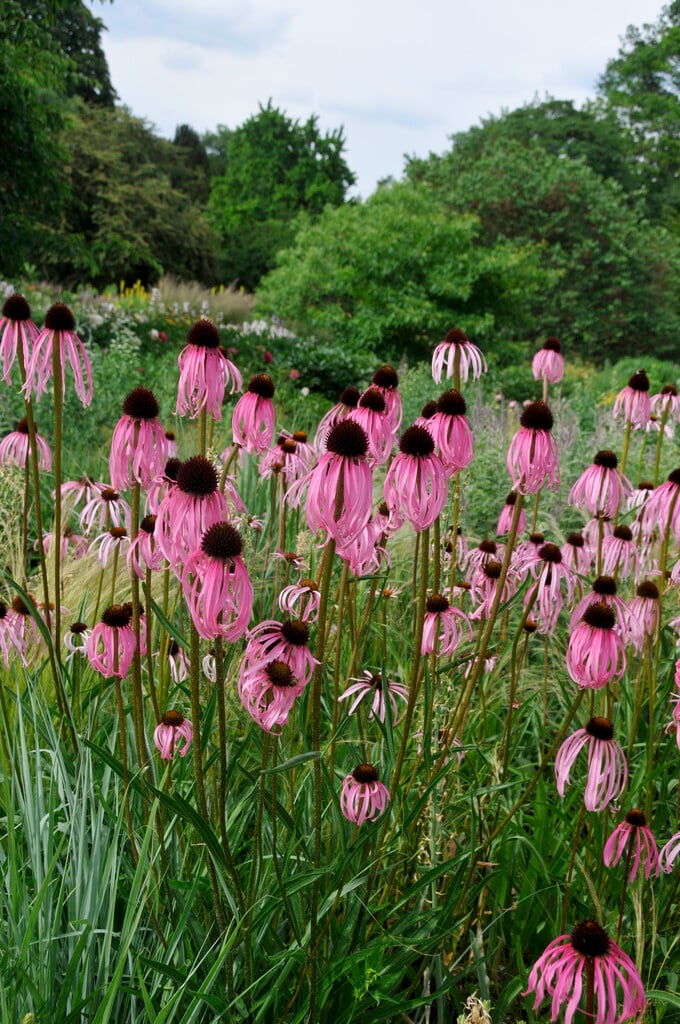Echinacea simulata
glade coneflower
A highly attractive, upright, perennial coneflower species from Kentucky and the neighbouring states, producing fragrant pink-purple blooms in summer. The flowers have a large, dark brown central cone surrounded by long, narrow, drooping pale pink to purple petals. Extremely attractive to pollinators and an excellent cut flower. It is vulnerable because of the pharmaceutical value of its roots.

Buy this plant
Size
Ultimate height
0.5–1 metresTime to ultimate height
2–5 yearsUltimate spread
0.1–0.5 metresGrowing conditions
Moisture
Well–drainedpH
Acid, Alkaline, NeutralColour & scent
| Stem | Flower | Foliage | Fruit | |
| Spring | Green | |||
|---|---|---|---|---|
| Summer | Pink Purple | Green | ||
| Autumn | Green | |||
| Winter |
Position
- Full sun
Aspect
East–facing or South–facing or West–facing
Exposure
Exposed or Sheltered Hardiness
H5Botanical details
- Family
- Asteraceae
- Native to GB / Ireland
- No
- Foliage
- Deciduous
- Habit
- Clump forming
- Genus
Echinacea are erect, clump-forming rhizomatous perennials with simple or pinnately lobed leaves and solitary, long-stalked daisies with prominent conical central disks and often drooping ray florets; attractive to butterflies
- Name status
Correct
How to grow
Cultivation
Grow in fertile, humus rich, well drained soil in full sun. Surface sow onto moist but well drained seed compost and lightly cover with vermiculite. Maintain at a temperature of 20-24C. Germination can be slow and irregular, cold stratify if germination does not occur. Transplant into pots when seedlings are large enough to handle. Take care when propagating by divison or root cuttings as they resent a lot of disturbance
Propagation
Propagate by seed, division in Spring or Autumn or by root cuttings from late Autumn to early Winter
Suggested planting locations and garden types
- Cottage and informal garden
- Patio and container plants
- Prairie planting
- Wildflower meadow
- Wildlife gardens
- Cut flowers
- Flower borders and beds
Pruning
Deadhead to extend flowering
Pests
Generally pest-free
Diseases
Generally disease-free
Love gardening
Sign up to receive regular gardening tips, inspiration, offers and more
View our Privacy Policy
Get involved
The Royal Horticultural Society is the UK’s leading gardening charity. We aim to enrich everyone’s life through plants, and make the UK a greener and more beautiful place.